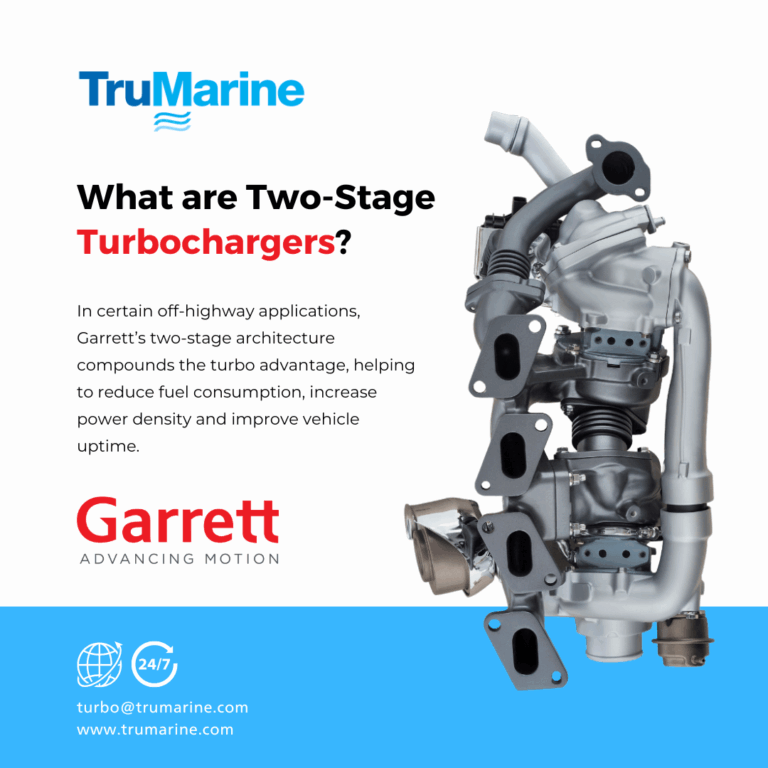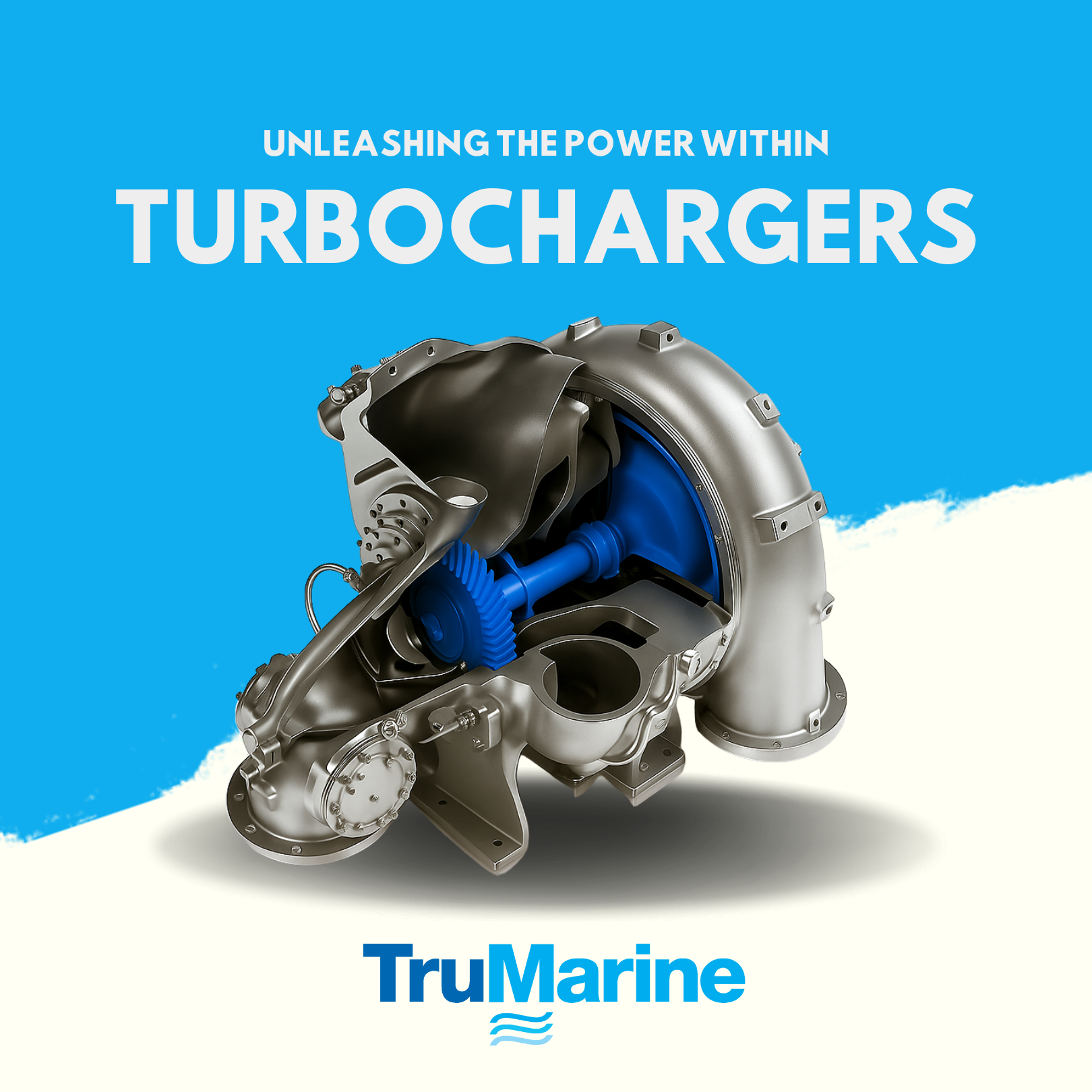
What Is Two-Stage Turbocharging?
- The first-stage turbo compresses ambient air to about 2.0–2.5x atmospheric pressure.
- That compressed air then flows into the second-stage turbo, boosting it again by another 2.0–2.5x.
- The final result: charge air entering the engine at up to 4–5x atmospheric pressure, slightly warmed (typically just +20°C over ambient), and primed for optimized combustion.
Key Benefits of Garrett Two-Stage Turbos
✅ Fuel Efficiency Gains
By improving combustion with high-pressure charge air, engines burn fuel more completely, reducing overall consumption.
✅ Higher Power Density
Engines become more compact yet powerful—especially ideal for downsized off-highway equipment and heavy-duty vehicles.
✅ Lower NOx Emissions
High-pressure turbocharging increases the exhaust gas recirculation (EGR) rate, aiding in significant NOx reduction.
✅ Enables Miller Cycle Engines
Two-stage systems offer the pressure ratio capability needed to support Miller or Atkinson cycle engines, delivering both fuel efficiency and emissions compliance.
✅ Better Transient Response & Low-Speed Torque
Two-stage architecture improves throttle response and torque delivery at low speeds—crucial for load-carrying and start-stop operations.
Proven in the Field, Backed by Evolution
Tru-Marine Brings the Advantage to You
As Garrett’s Master Distributor, Tru-Marine is your go-to partner for implementing Two-Stage turbocharging solutions across Southeast Asia and Taiwan. Whether you operate in construction, mining, power generation, or marine, our team is ready to help you deploy the right solution—with local support and deep technical know-how.


